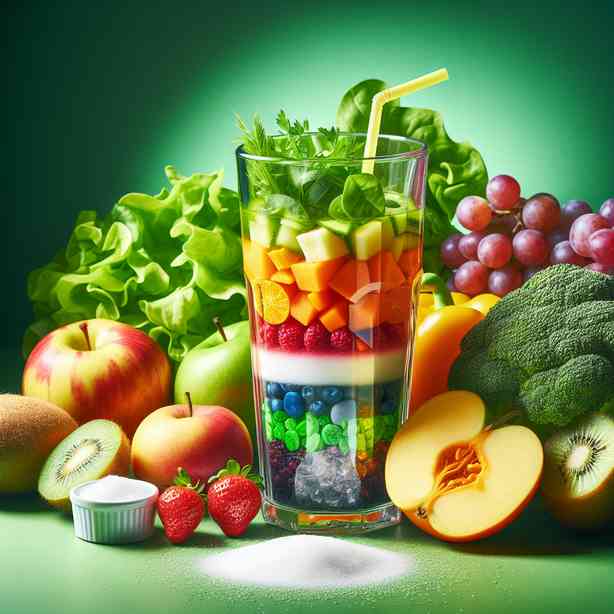
In recent years, there has been an increasing focus on health and nutrition, prompting many individuals to make more informed choices about what they consume. Among the various beverages available, “healthy” drinks such as smoothies, juices, and flavored waters have gained significant popularity. While these beverages often tout impressive health benefits, it is essential to scrutinize their true caloric content and understand the hidden calories that can contribute to unwanted weight gain.
Many people assume that a fruit smoothie, for example, is a low-calorie, nutritious option. However, it is easy to overlook the ingredients added to create that delicious blend. The base can start simple with fruits, but once additional components such as yogurt, nuts, seeds, honey, or sweeteners are incorporated, the caloric count can rise significantly. A typical fruit smoothie can quickly escalate from a seemingly reasonable 150 calories to upwards of 500 calories or more, especially when aiming for that creamy texture or extra flavor. Therefore, it is crucial to be mindful of portion sizes and ingredient choices when preparing or ordering a smoothie.
Similarly, juice is often marketed as a healthful drink, packed with vitamins and nutrients. However, the process of juicing removes fiber, which is vital for digestive health and aids in the feeling of fullness. For instance, an eight-ounce glass of orange juice can contain approximately 110 calories and roughly 22 grams of sugar, much of which comes from the fruit itself. In contrast, eating a whole orange provides fiber and fewer calories, emphasizing the importance of whole foods over processed alternatives. Selecting juices with little to no added sugars or opting for vegetable-based juices can be more advantageous for those watching their caloric intake.
Flavored waters have also surged in popularity as alternatives to sugary sodas and energy drinks. While many brands advertise zero calories or “naturally flavored” options, some drinks still contain hidden sugars or artificial flavors that can add up. For example, sachets or liquid enhancers that are mixed with water may advertise low calories yet can often contain artificial sweeteners that might lead to cravings or unwanted side effects. Always check the ingredient list and nutritional label to ensure these beverages align with your health goals.
Energy drinks, frequently marketed as performance enhancers, are another category to be cautious about. Many consumers gravitate towards these drinks for a quick boost, often overlooking their caloric content. While some energy drinks may offer low or zero-calorie options, the vast majority are often loaded with added sugars. A typical energy drink can contain anywhere from 150 to 300 calories, which could significantly impact a person’s daily caloric intake, especially if consumed regularly alongside other meals.
Another aspect to consider is the portion sizes of these “healthy” drinks. Many establishments serve drinks in sizes that may exceed what one would consider a single serving. For instance, a 16-ounce smoothie or juice can contain double the calories of an 8-ounce serving. Furthermore, restaurant chains often use larger cup sizes when serving these beverages, making it difficult for individuals to gauge their consumption accurately. It’s crucial to either share drinks with others or opt for smaller sizes to avoid inadvertently consuming excess calories.
In addition to assessing calories, understanding the nutritional balance of these beverages is key. A healthy drink should offer more than just calories; it should provide genuine health benefits. For example, smoothies can be made with leafy greens, such as spinach or kale, which not only add minimal calories but are also nutrient-dense. Incorporating protein sources like Greek yogurt or plant-based protein powder can also enhance the nutritional quality while keeping you satisfied longer.
The growing trend of “wellness” shots, which are often filled with superfoods like turmeric, ginger, or even activated charcoal, also deserves a closer look. While some of these drinks may make health claims, their caloric content can vary substantially. Many people may assume they offer health benefits without considering the caloric contribution when consumed in large quantities. Thus, moderation should be a guiding principle wherever health shots are concerned, as they can quickly become calorie-dense if taken daily without caution.
Lastly, be aware of the impact of garnishes and additives, such as sweeteners, syrups, and toppings, in purportedly healthy drinks. Whether it’s a drizzle of honey in your green tea or a sprinkle of granola on your smoothie bowl, these elements can add hidden calories. While they may enhance flavor and visual appeal, they can also push a “healthy” drink into calorie-laden territory. Learning to enjoy beverages with minimal additives can help maintain a balanced diet while avoiding unnecessary calories.
In summary, while many beverages marketed as “healthy” can indeed offer nutritional benefits, they often harbor hidden calories that can compromise your dietary goals if consumed mindlessly. It’s essential to remain vigilant regarding ingredient lists, portion sizes, and method of preparation. By being more conscious of what goes into these drinks, you can enjoy them as part of a balanced diet without undermining your health objectives. In the quest for wellness, knowledge is undoubtedly power, and being informed about hidden calories will empower you to make choices that support your health journey.


